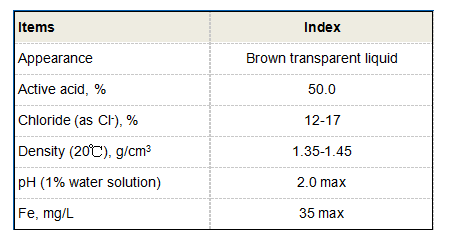coagulant flocculant
Understanding Coagulants and Flocculants in Water Treatment
Water treatment is a crucial process that ensures the safety and quality of drinking water. Among the chemical agents used in this field, coagulants and flocculants play pivotal roles. While both are vital for the effective removal of suspended solids and impurities, they serve different functions and work in distinct stages of the treatment process.
What are Coagulants?
Coagulants are chemicals used to promote the aggregation of particles suspended in water. When added to water, coagulants neutralize the charges on the particles, which typically repels each other due to similar electrostatic charges. By reducing the repulsive forces, coagulants enable these particles to come together and form larger aggregates, known as flocs.
Alum (aluminum sulfate) is one of the most common coagulants used in water treatment. Other types include ferric sulfate, polyaluminum chloride, and calcium oxide. The selection of a coagulant depends on the water quality, including factors like pH and the type of contaminants present.
The Role of Flocculants
Flocculants, on the other hand, are substances that facilitate the agglomeration of flocs formed by coagulants. They are typically high-molecular-weight polymers that help bind the small flocs into larger clumps which can be more easily removed from the water. Flocculation is considered a critical secondary process following coagulation.
Flocculants are available in various forms, including anionic, cationic, and non-ionic, depending on the charge they carry and the nature of the particles they are intended to agglomerate. The effective use of flocculants can significantly enhance the efficacy of the water treatment process, leading to clearer water and more efficient settling of sludge.
coagulant flocculant

The Combined Process
The water treatment process typically begins with coagulation, where coagulants are added to the raw water. This is usually followed by rapid mixing to ensure uniform distribution of the chemicals. After a period of mixing, the water is allowed to settle where gravity separates the denser aggregates from the clearer water.
Once the flocs have formed, flocculants are introduced to the mixture. The flocculant enhances the formation of larger aggregates, which allows for easier removal by sedimentation or filtration. This two-step approach—coagulation followed by flocculation—is essential to achieve effective clarification of water.
Key Benefits
The use of coagulants and flocculants offers several advantages in water treatment. First and foremost, they significantly improve water clarity by removing suspended particles, microorganisms, and organic matter. Additionally, these chemicals help in reducing the concentrations of contaminants such as heavy metals and phosphorus, leading to safer drinking water.
Furthermore, the use of these agents contributes to the overall efficacy of the treatment process, thus reducing the amount of water that needs to be treated. This can result in cost savings for municipalities and water treatment facilities, as well as a reduced environmental impact.
Conclusion
In summary, coagulants and flocculants are essential allies in the pursuit of clean and safe drinking water. Their combined action in the water treatment process not only enhances the clarity and quality of water but also equips treatment facilities with the tools needed to tackle a variety of contaminants effectively. As water quality standards continue to evolve and demands for safe drinking water increase, understanding and optimizing the use of coagulants and flocculants will remain a top priority for water treatment professionals worldwide. By investing in these technologies, we can ensure a sustainable and safe water supply for future generations.
-
Dodecyldimethylbenzylammonium Chloride: High-Purity DisinfectantNewsAug.30,2025
-
2-Phosphonobutane-1,2,4-Tricarboxylic Acid: Scale & CorrosionNewsAug.29,2025
-
Premium Isothiazolinones | Broad-Spectrum Biocidal SolutionsNewsAug.28,2025
-
LK-319 Special Scale And Corrosion Inhibitor For Steel Plants: Advanced Solutions for Industrial Water SystemsNewsAug.22,2025
-
Flocculant Water Treatment: Essential Chemical Solutions for Purification ProcessesNewsAug.22,2025
-
Isothiazolinones: Versatile Microbial Control Agents for Industrial and Consumer ApplicationsNewsAug.22,2025





